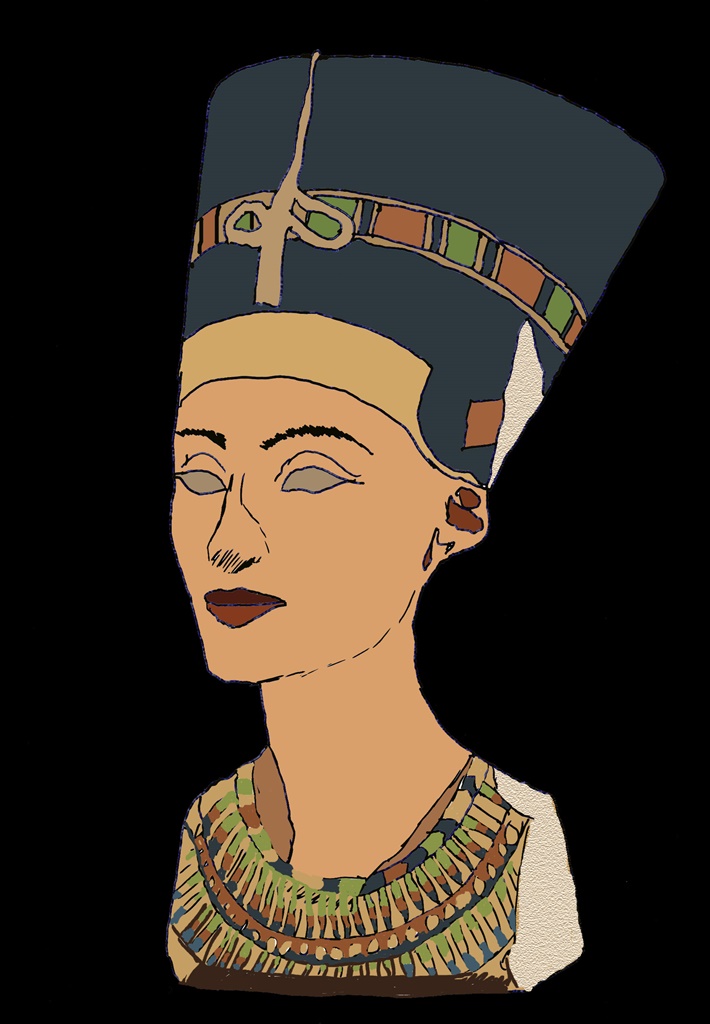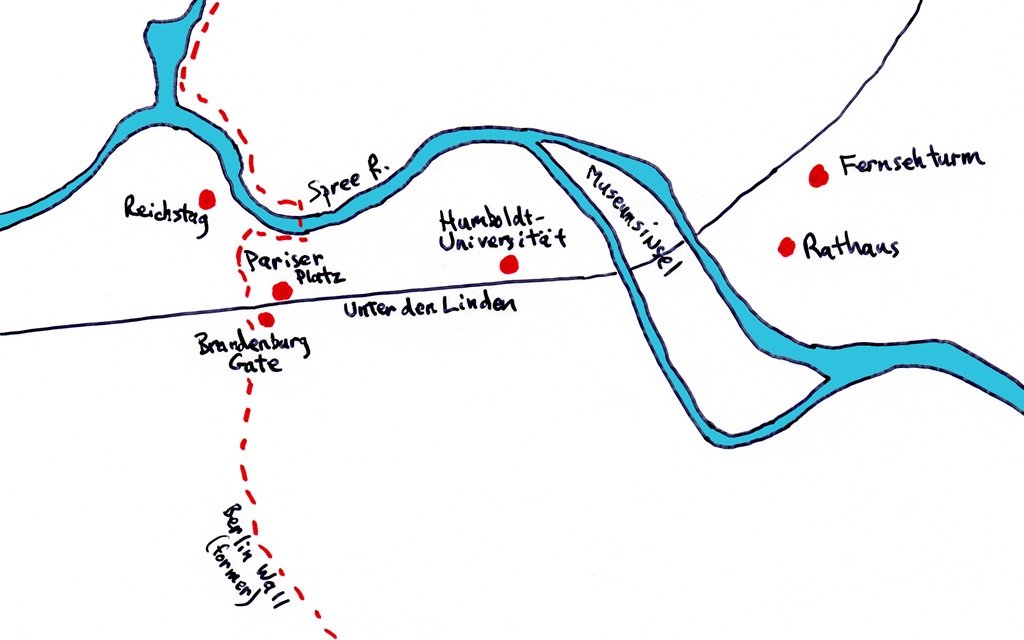
East Berlin
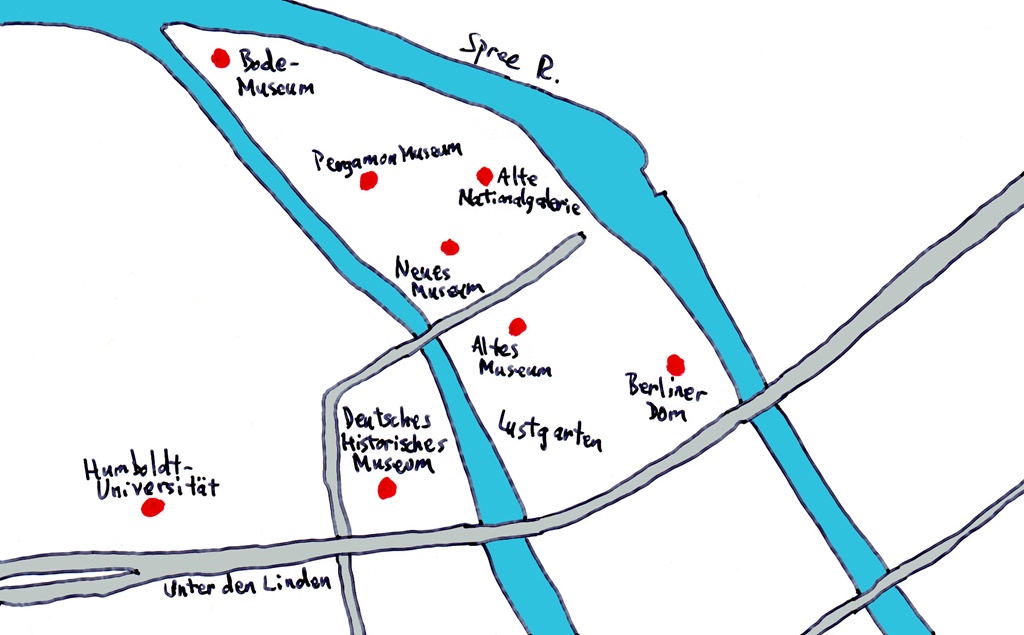
Museumsinsel
The Museumsinsel is an island in the Spree River, on which several museums have been
situated. Or, to be more accurate, the Museumsinsel is the north half of this island. The
south half is known as Fischerinsel, a reference to a fishing community that once lived
there. Older buildings covered Fischerinsel well into the 20th Century, and it was something
of a tourist attraction prior to World War II. The old buildings actually survived the war
reasonably well, but they did not survive the communist German Democratic Republic, which
bulldozed them in 1964 to make way for high-rise residences. Which brings up the fact that
the entire island is well east of the path of the former Berlin Wall. This means that its
museums were not accessible to most westerners for more than four decades.
The principal museums on the Museumsinsel, and the years in which they first opened, are as
follows:
- The Altes Museum,
or Old Museum (1830)
- The Neues Museum, or New
Museum (1859), actually the second-oldest museum on the island (but newer than the Altes Museum)
- The Alte Nationalgalerie,
or Old National Gallery (1876)
- The Bode Museum,
named for curator Wilhelm von Bode (1904)
- The Pergamon Museum,
named for the ancient Pergamon Altar from Asia Minor, which was brought from Turkey and rebuilt within the museum (1930)
Over the years, the museums have undergone changes to their names and collections. The Altes
Museum now displays classical antiquities, the Alte Nationalgalerie houses a collection of
19th Century artworks, and the Bode Museum has a mixed collection of sculptures, paintings,
coins and medals. We didn’t visit these museums. But we did visit the Pergamon Museum,
which will be discussed in more detail in a future web page, and the Neues Museum, which is
the subject of this one.
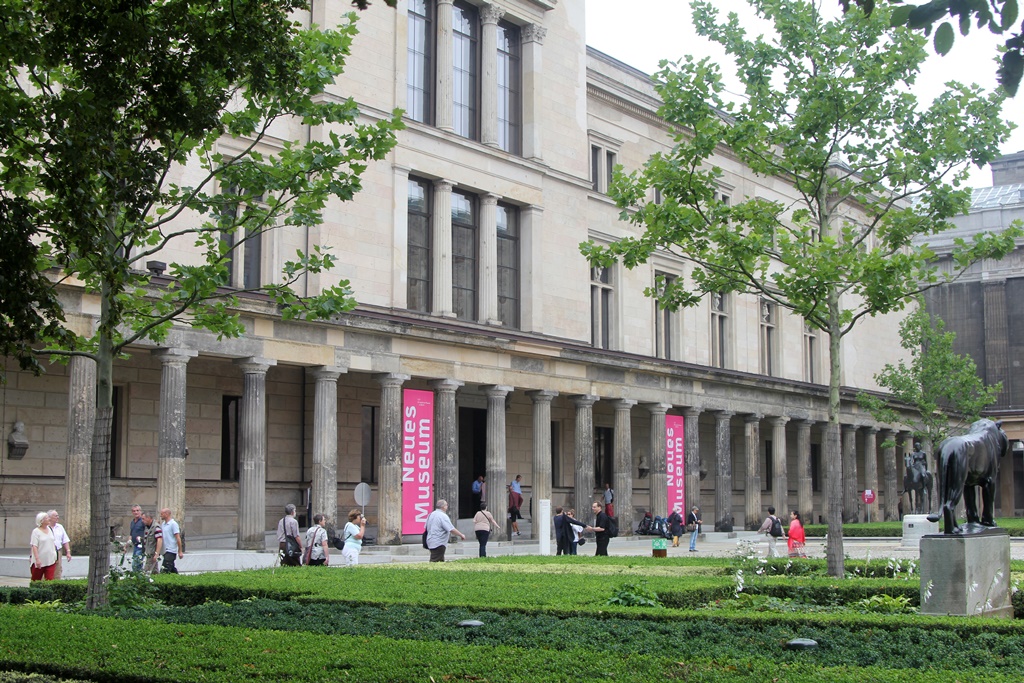
Neues Museum
The collection of the Neues Museum (noy-ess) consists mainly of ancient Middle Eastern and
European artifacts, with an emphasis on things from Egypt. Its most famous piece
is a 3300-year-old bust of Queen Nefertiti. The Egyptian government has repeatedly
requested the return of the bust to Egypt, and many Egyptians maintain that it was
acquired by the Germans through underhanded means in 1913. But the Germans
maintain otherwise, and for now the bust remains in Berlin. Of the many objects in
the Neues Museum, the Nefertiti bust is the one item that visitors are not allowed
to photograph. The bust is located by itself in a small room, and is flanked by
museum guards who enforce this restriction. But photographs are easily found on
the Internet, and here is an artist’s rendering:
Bust of Nefertiti
We got to the Neues Museum by linking up with the S-Bahn (Stadtschnellbahn,
or "fast city railway", distinct from the U-Bahn, but with some connecting
stations). This took us to the Hackescher Markt station east of the Spree,
from which we walked back across a bridge to the island. On the way to the
museum, we had a good look at the Alte Nationalgalerie, and at some statues
in the courtyard in front of the Neues Museum. We’d heard that tickets to
the museum could be difficult to obtain, so we’d purchased ours on-line
before leaving the U.S.
Nella on Train
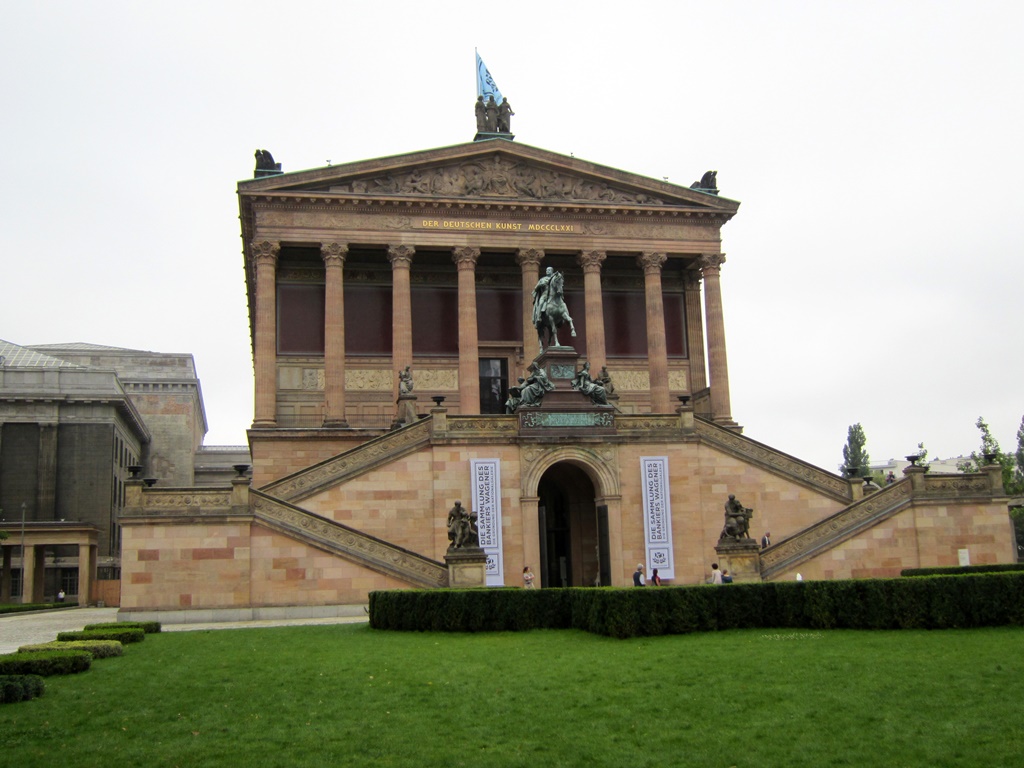
Alte Nationalgalerie
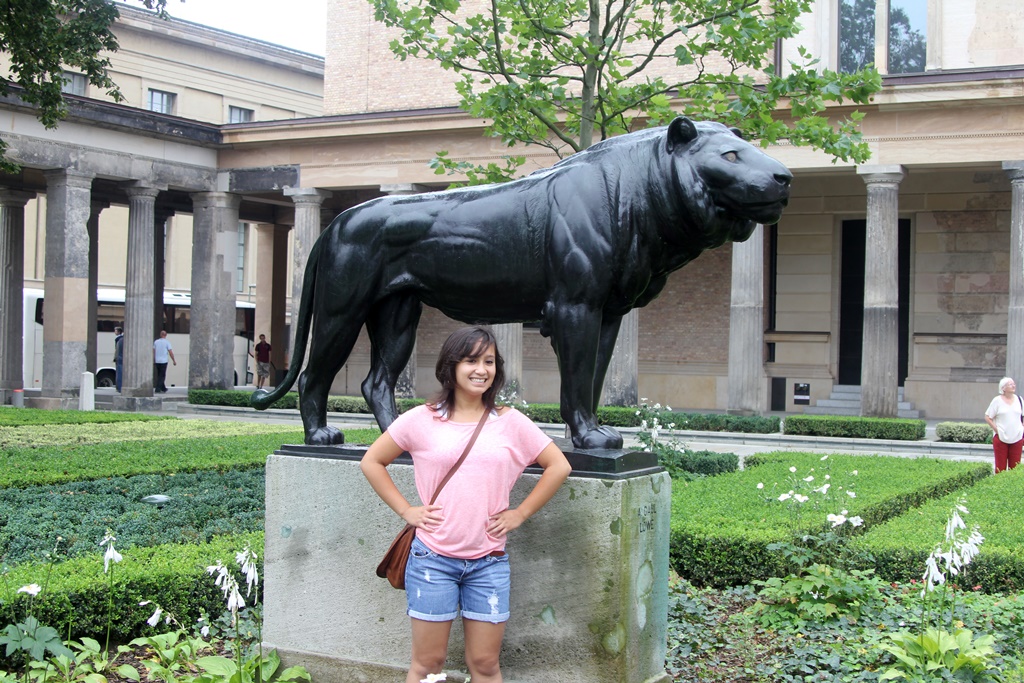
Connie and Statue
The Neues Museum itself was heavily damaged during World War II, and remained
closed for the entire second half of the 20th Century, only reopening in October
of 2009. There were apparently some architectural elements that could not be
restored, but the museum building is still attractive, and is filled with an
impressive array of artifacts. As stated above, Egyptian artifacts are in
abundance, and here are some of them:
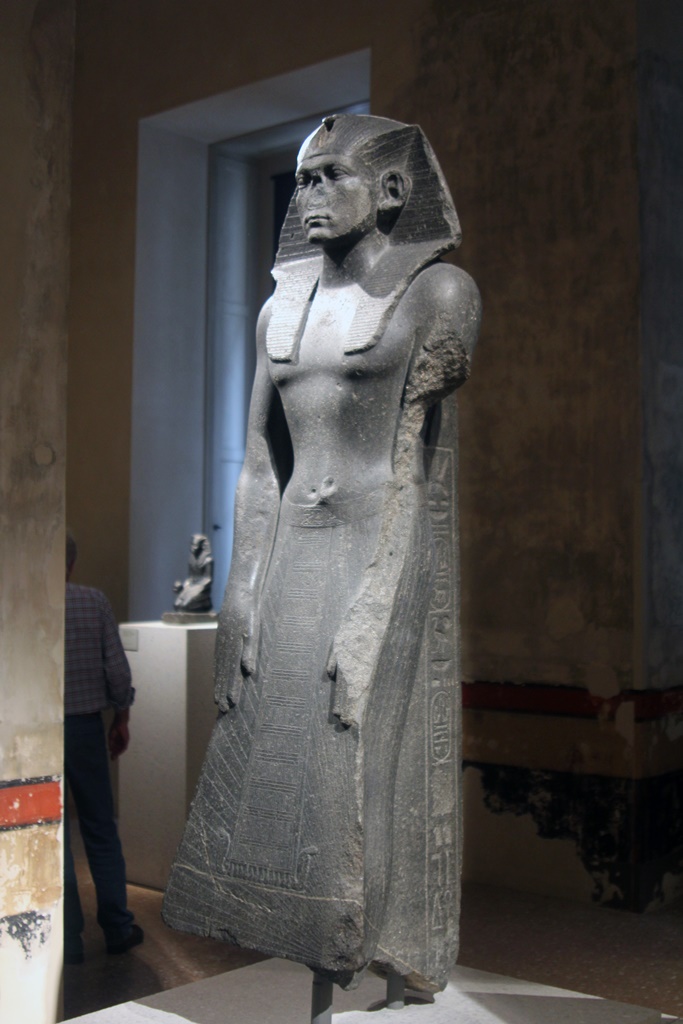
Statue of Amenemhet III (ca. 1840-1800 B.C.)
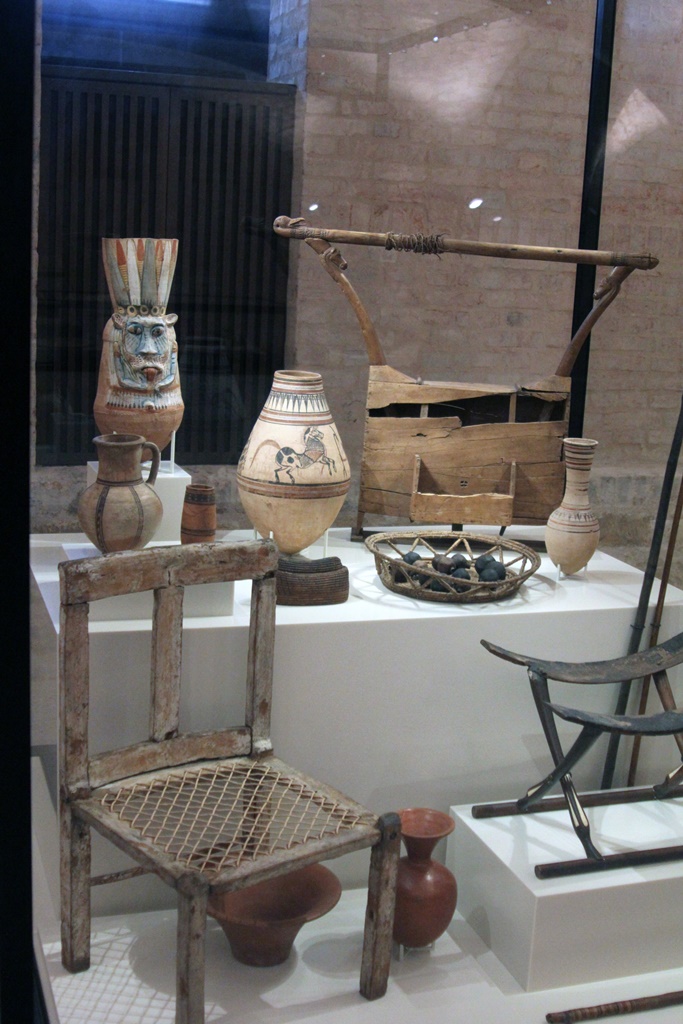
Objects and Chairs (ca. 1450 B.C.)

Ancient Egyptian Painting

Sa-Iset and Samut Praying to Sungod (1500-1400 B.C.)

Tomb Relief of Amenhotep III (ca. 1360 B.C.)
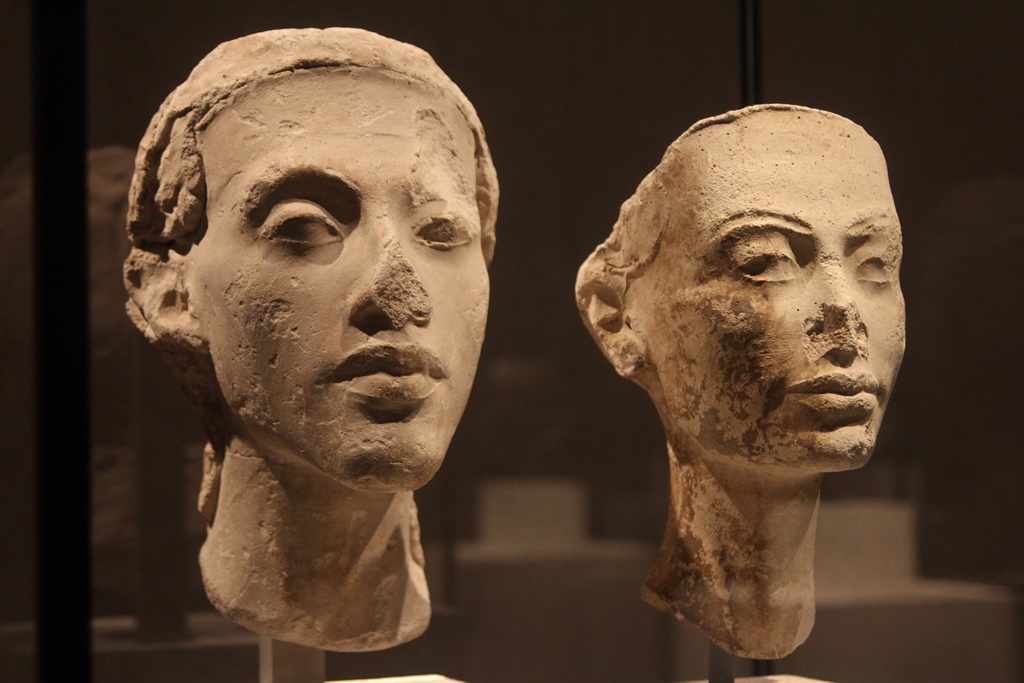
Royal Couple Nefertiti and Akhenaten (ca. 1340 B.C.)

Offering Chamber of Metjen

Walk in the Garden of a Royal Couple (ca. 1335 B.C.)
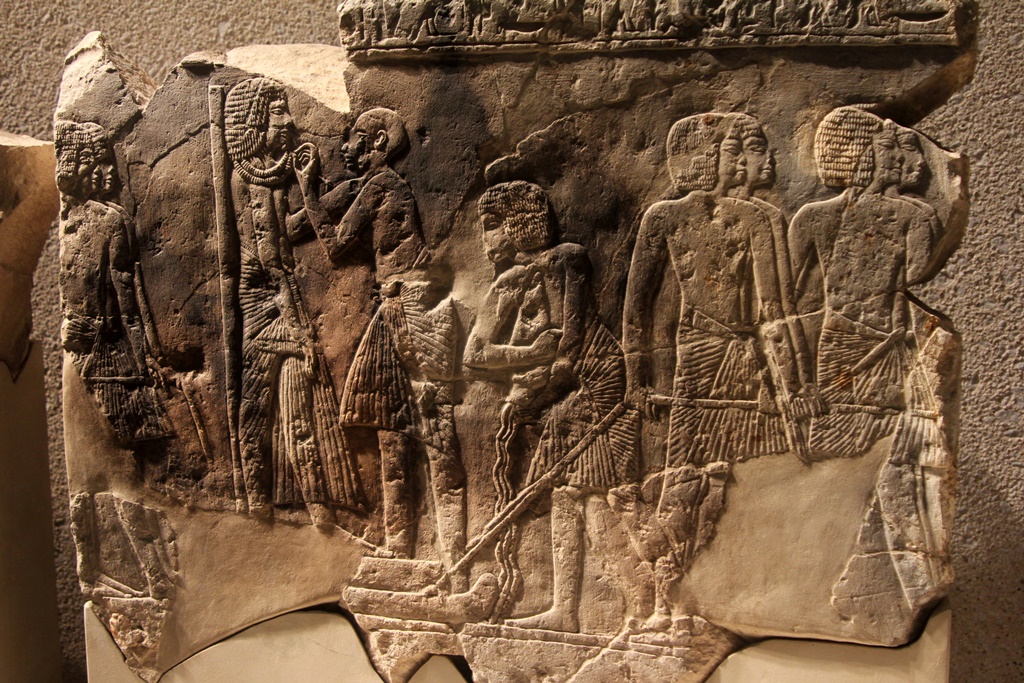
Offering Bearers and Statue Transport (ca. 1325 B.C.)
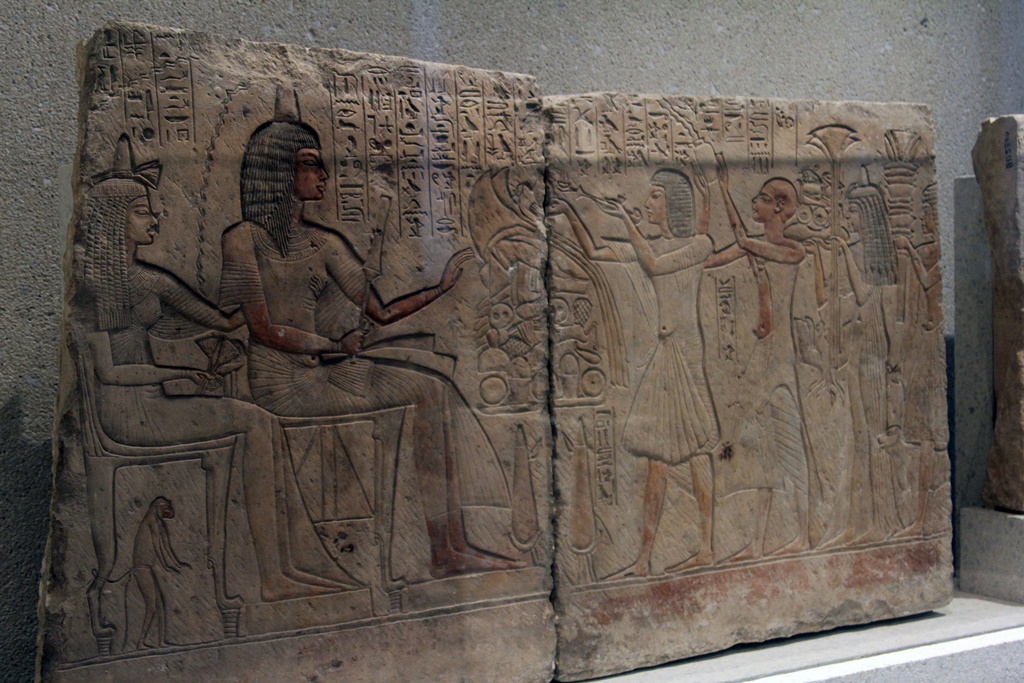
Riy and Wife Maya and Offering Table (ca. 1320-1290 B.C.)

Pillar Fragment: Seti I and Osiris (ca. 1290 B.C.)
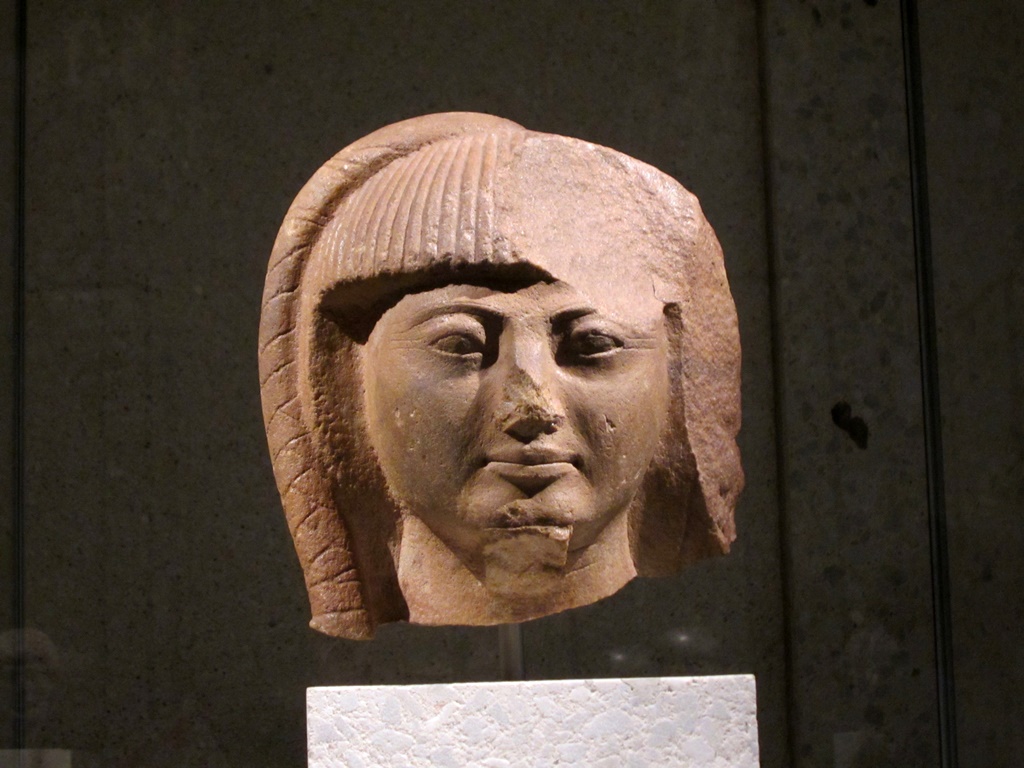
Prince Khaemwase, Son of King Ramses II (ca. 1260 B.C.)
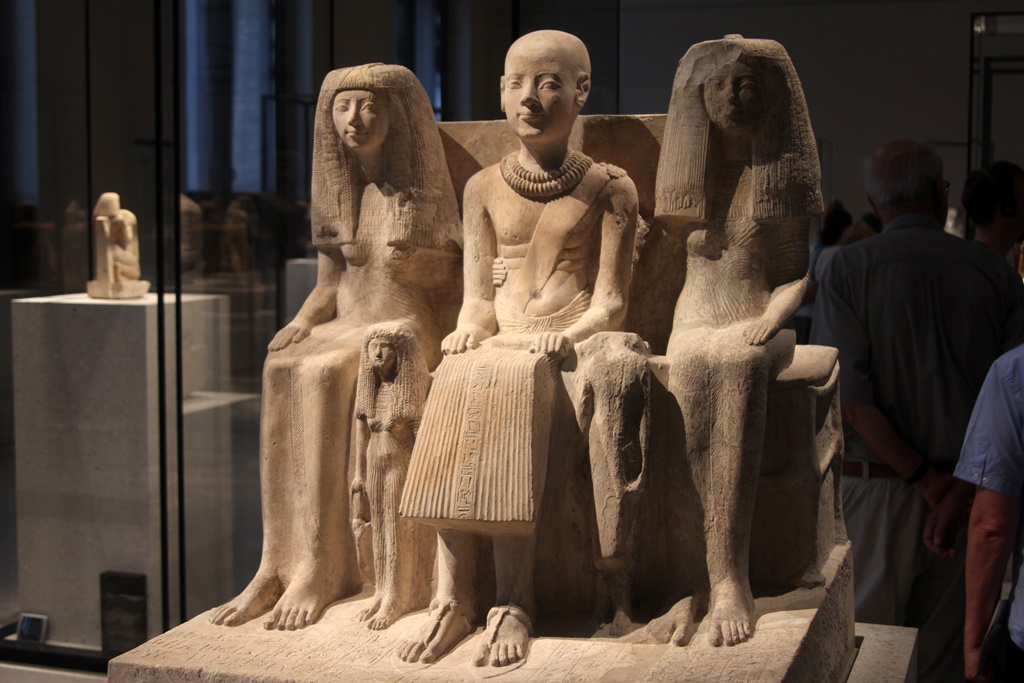
Family Group of Ptahmai (1250-1200 B.C.)

Sarcophagus Room
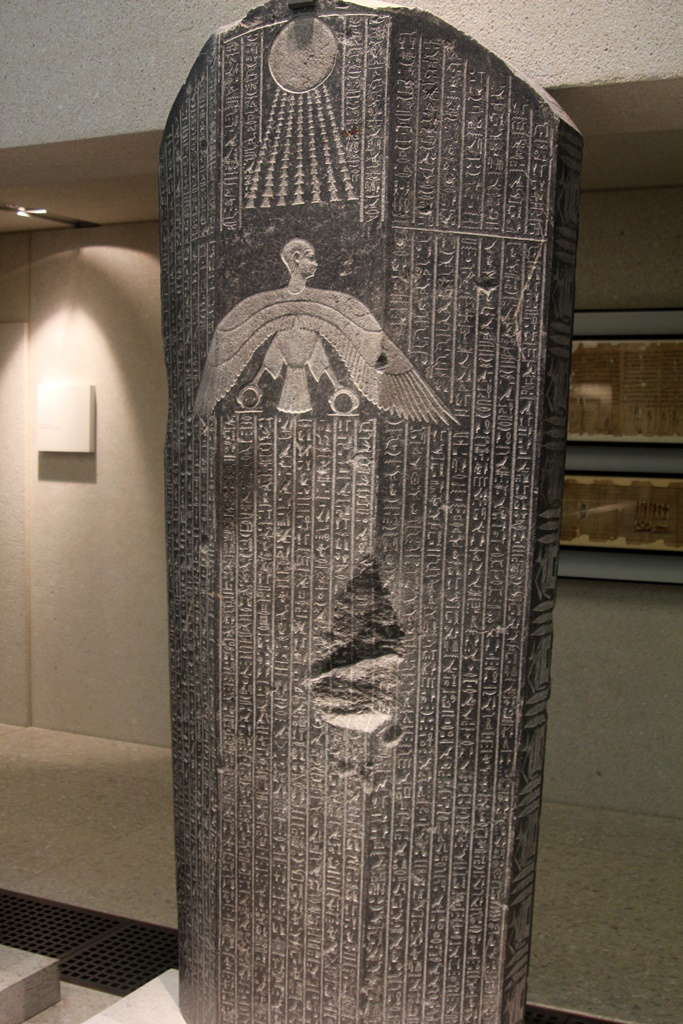
Sarcophagus Lid of Djehapimu (746-332 B.C.)
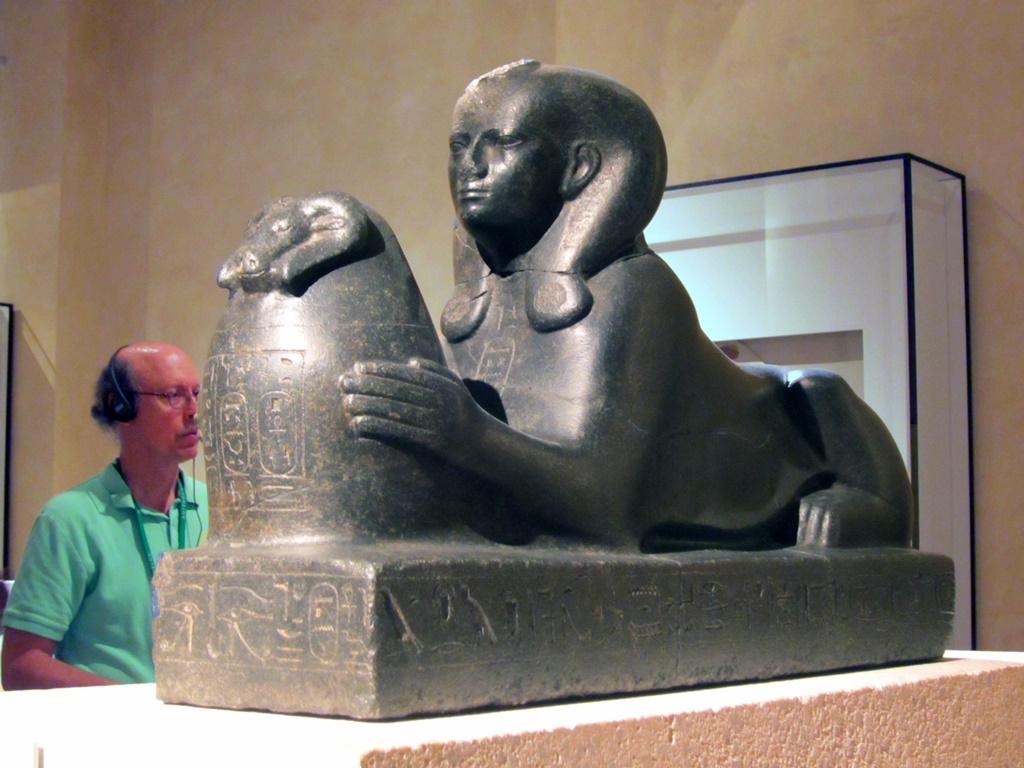
Sphinx of Shepenupet II (ca. 660 B.C.)
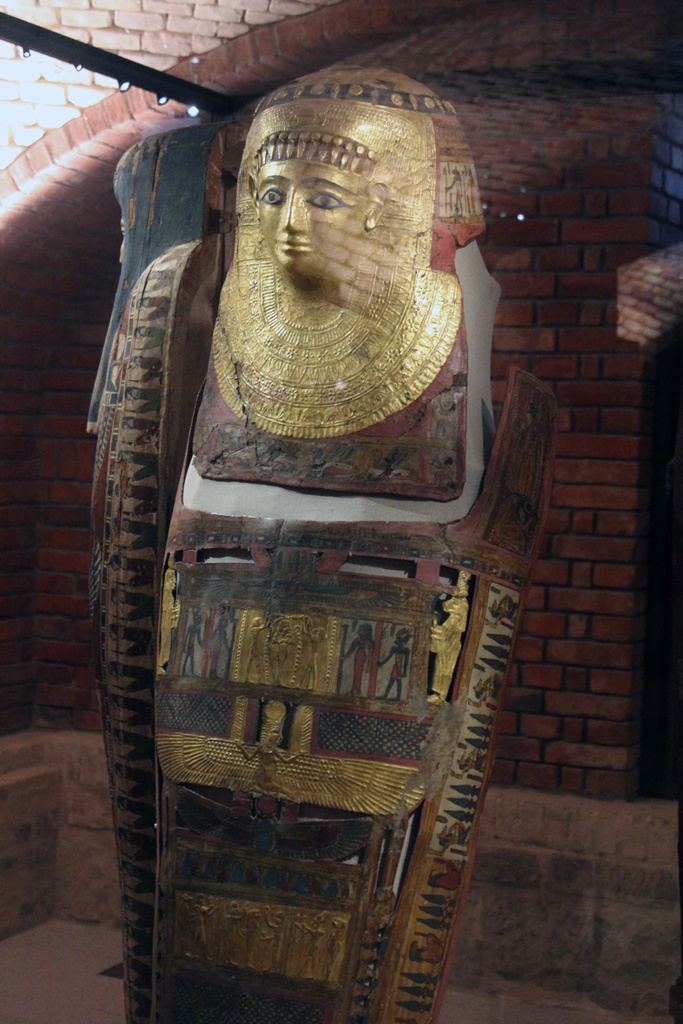
Mummy Case
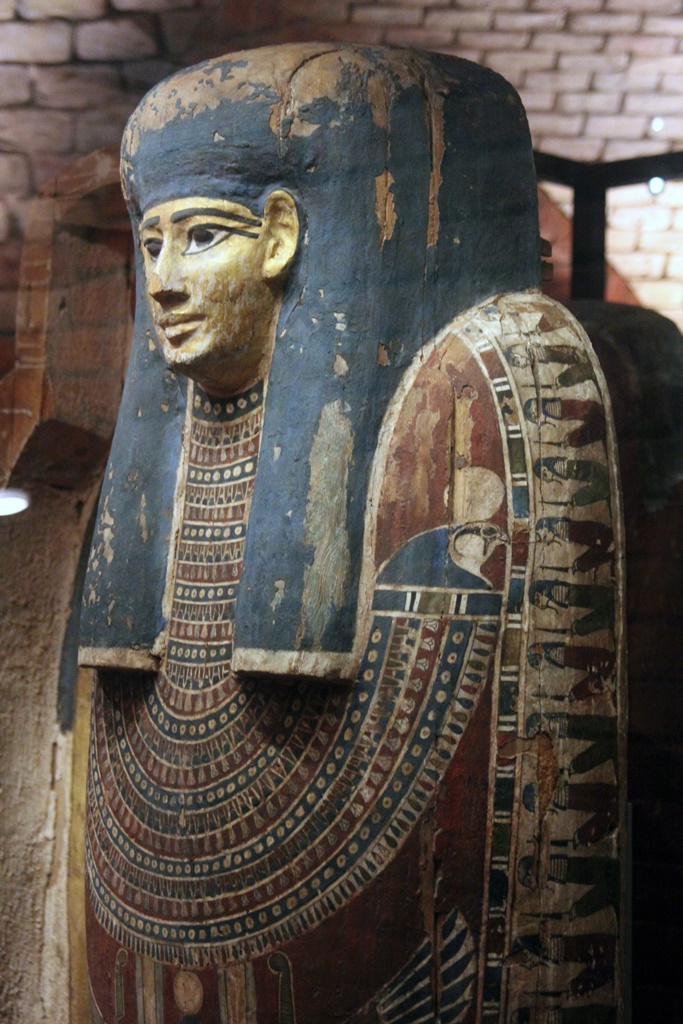
Mummy Case
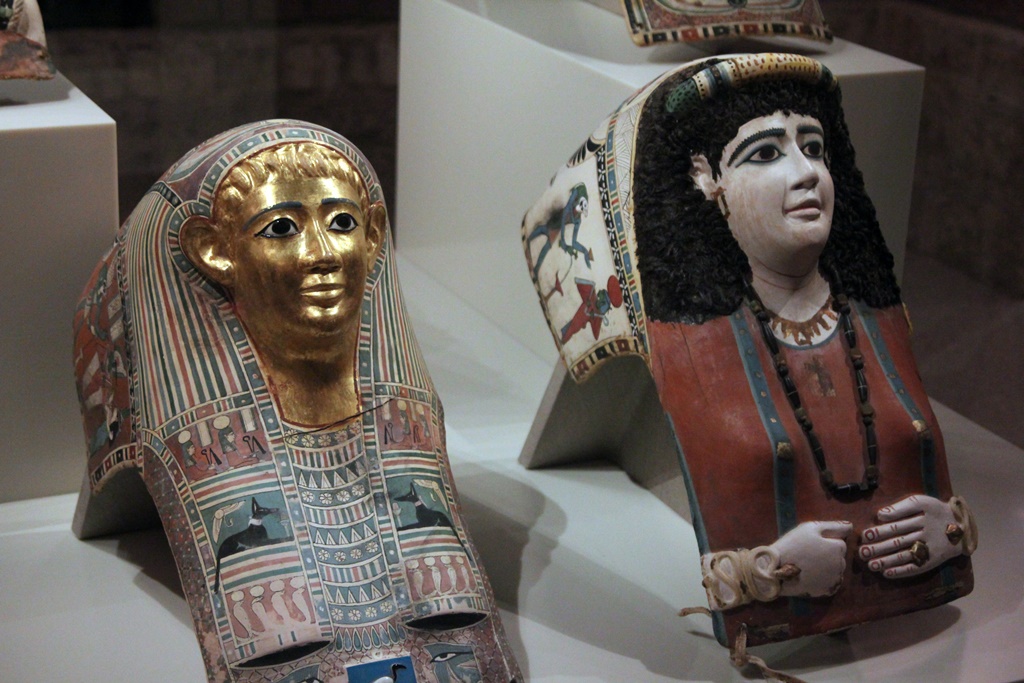
Mummy Masks

Head of King Amasis (ca. 550 B.C.)

Tomb Treasure - Rings and Bracelet (1st C.)

Rings (1st C.)
Also on display are some ancient artifacts from the Mediterranean area:
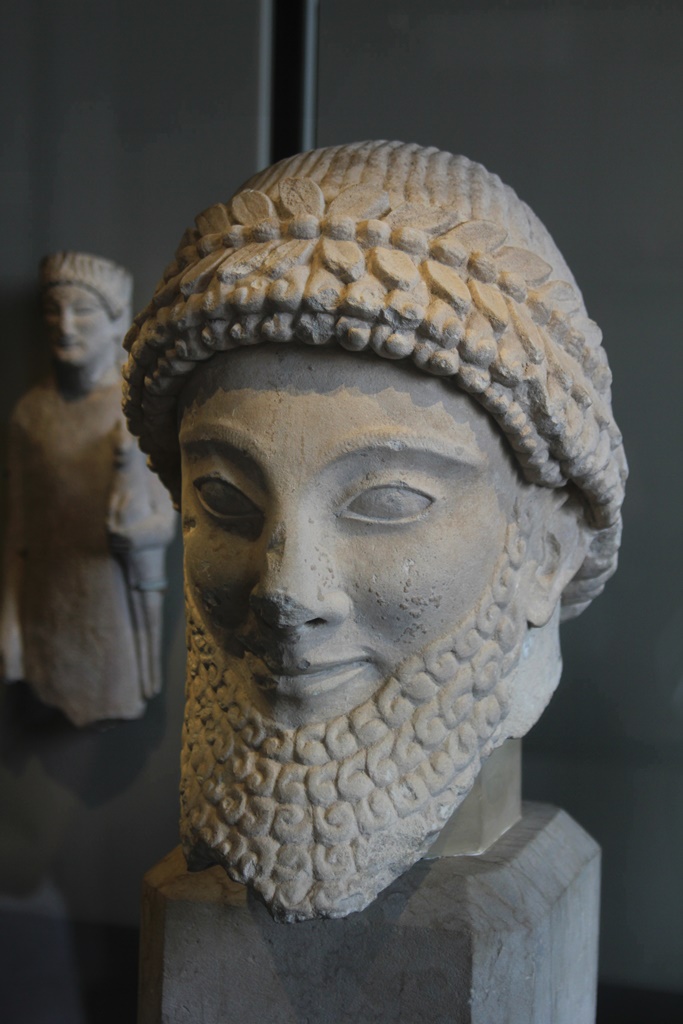
Head of Statue (Cyprus, 5th C. B.C.)

Jugs with Decorations (Cyprus, 8th-6th C. B.C.)
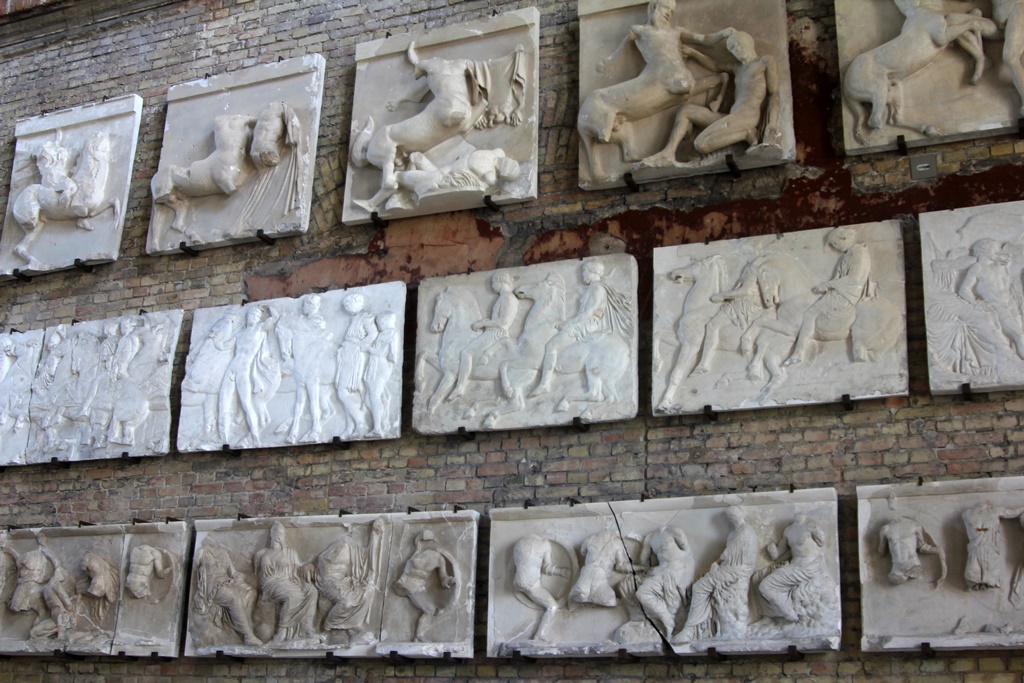
Reliefs
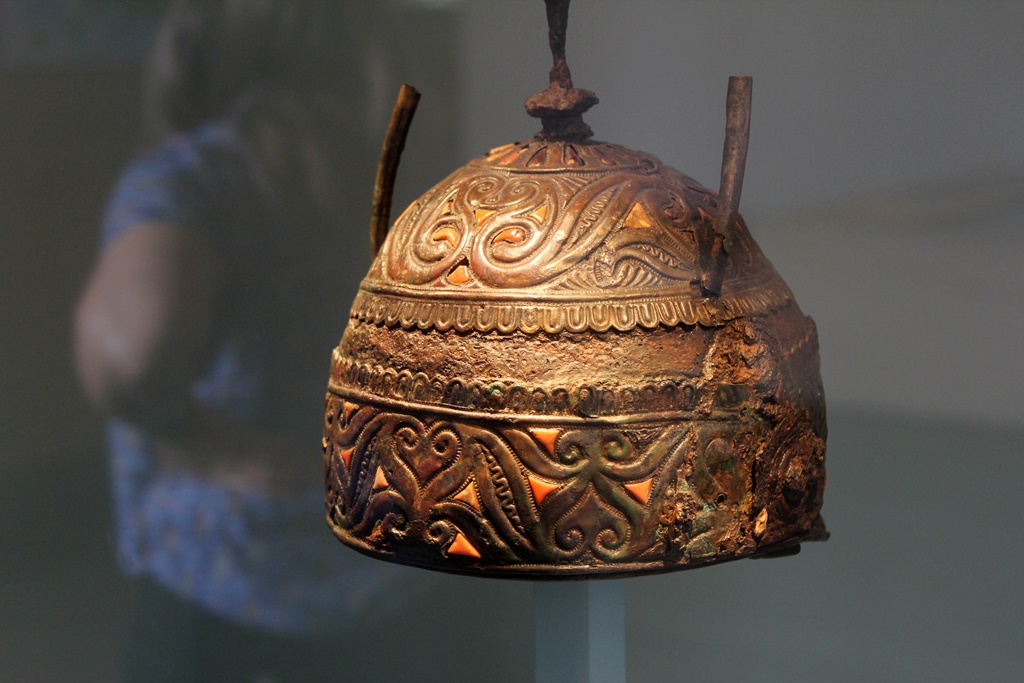
Bronze Helmet (Umbria, 4th C. B.C.)
Xanten Youth (Roman, 1st C. A.D.)
More northern parts of Europe are also represented. The points of origin of some
objects are not specifically known. In some cases, objects are copies of originals
that were looted during the war and are now on display in Russia.
Ceremonial Gold Hat (German, ca. 1000 B.C.)

Statue Room
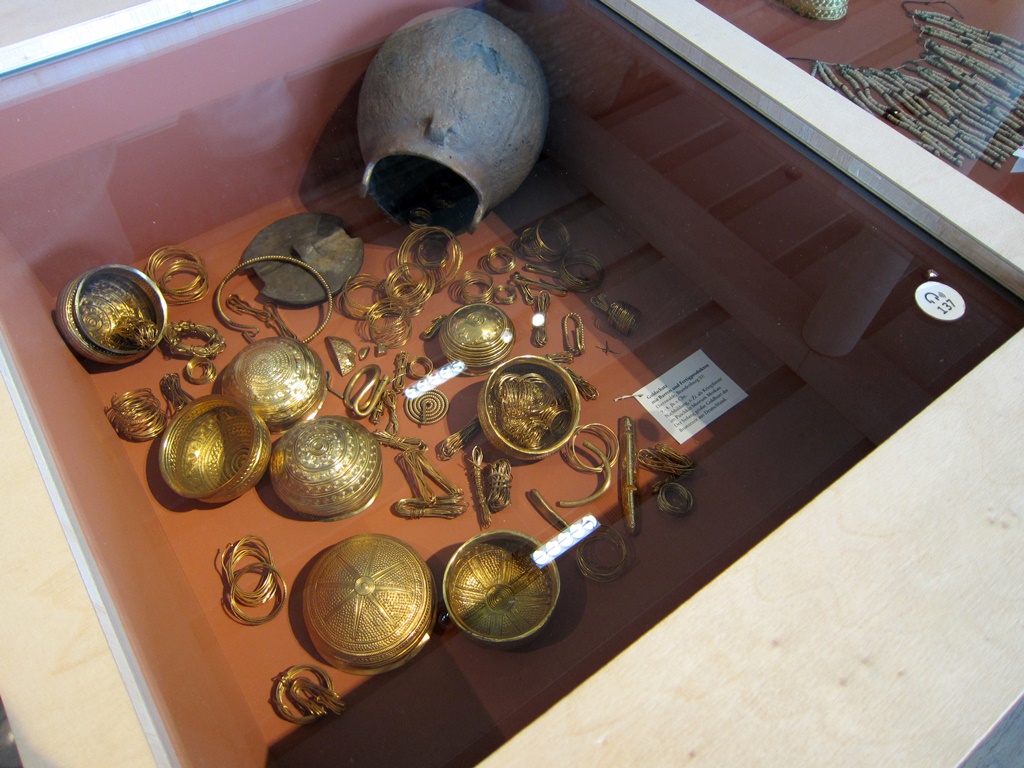
Gold Cache (copies, 9th-8th C. B.C.)
Other objects would not be considered ancient, and no doubt remain from a time
when the museum was less specialized.
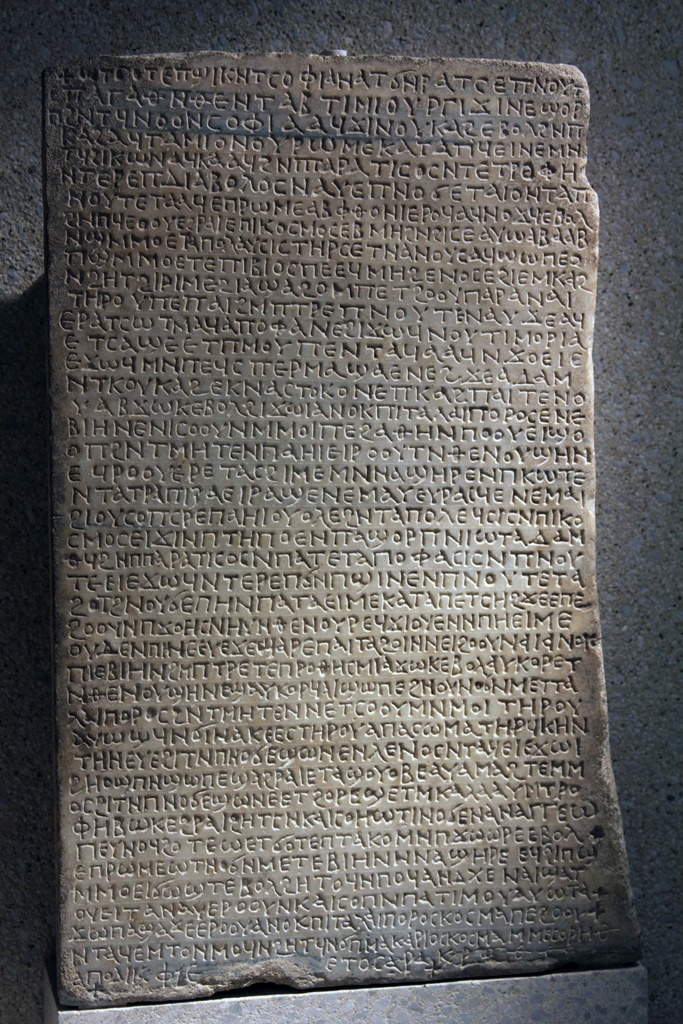
Coptic Gravestone (Byzantine, 805 A.D.)

Plaster Cast of Gates of Paradise, Florence
Gallery Ceiling
From the Neues Museum we proceeded south, and emerged from the cluster of museum buildings,
finding ourselves across a grassy area from a cathedral known as the Berliner Dom,
our next destination.




